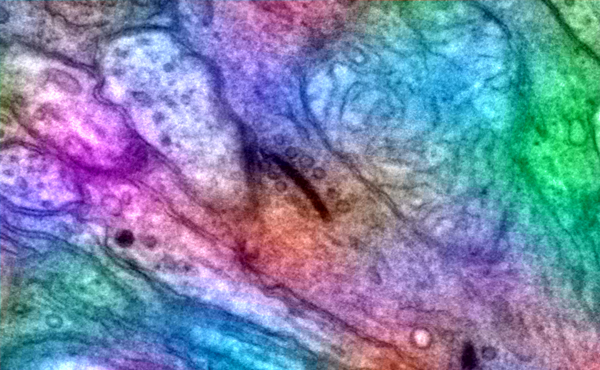This article by Josefin Snellman, Bhupesh Mehta, Norbert Babai, Theodore M Bartoletti, Wendy Akmentin, Adam Francis, Gary Matthews, Wallace Thoreson and David Zenisek examines the vesicular priming process at synaptic ribbons.
Synaptic ribbons are specialized presynaptic structures at specialized neurons that encode graded information in an analog sense, rather than all or nothing conductions of information that appear to occur at other synapses. Synaptic ribbons are found in specialized sensory systems like the auditory system and in the retina in bipolar cells and photoreceptor cells. The hypothesis behind their function is that they are able to sustain vesicular release for continuous periods of time by docking vesicles at the top of the ribbon, then migrating the vesicles down the ribbon to the site of synaptic release with each vesicle on the ribbon serving to stabilize other nearby vesicles. All of the vesicles on the synaptic ribbon then serve as a “readily releasable pool” of vesicles that position them for release at the bottom of the ribbon where they appear to be primed for release, however, the precise mechanism of this process is not understood.
This clever study acutely disconnected the ribbons with a fluorescein labeled RIBEYE (a major component of synaptic ribbons) binding peptide delivered into mouse rod bipolar cells. Fluorescence microscopy revealed localization to the presynaptic active zones while paired recording of rod bipolar cells and their postsynaptic amacrine cell targets demonstrated that the peptide did not prevent synaptic ribbon function.
They then photobleached the fluorescein to damage adjacent proteins revealing that while synaptic release itself was still possible, reloading of vesicles to the ribbon assembly was disabled. Furthermore, electrophysiology showed that transient signaling appeared to be intact while sustained activity was impaired suggesting vesicles cannot effectively priming/docking at the ribbon. Whether or not RIBEYE is directly involved with vesicular priming or docking is unclear, but it is at least involved in positioning or stability at the synaptic ribbon and this study opens the door for further exploration of the process.
Image originally posted here.
